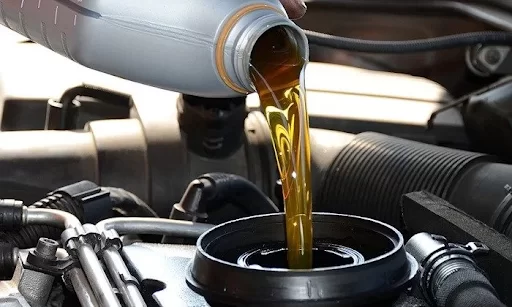Introduction:
Understanding the codes printed on the labels of car oils is crucial for every vehicle owner, whether you’re a car enthusiast or an average driver who just wants to keep their vehicle in good shape. While automotive mechanics are already familiar with these codes, it’s essential for others to grasp their significance as well. In this article, we will delve into the meaning behind these letters and numbers, enabling you to decipher and impress your friends, partner, and even your trusted mechanic.
Oil and Viscosity:
To comprehend the importance of these codes, we first need to understand viscosity. Viscosity refers to the resistance of a liquid, in this case, oil, to flow and lubricate the various components of an engine. It ensures proper lubrication of vital engine parts such as cylinder walls, piston walls, crankshaft mounts, and rocker arm shafts. Moreover, it aids in cooling areas that the engine’s cooling system cannot reach.
How to Interpret the Codes:
Let’s now dive into the heart of the matter – what do numbers like 5W-30 and 10W-40 mean? Decoding these codes is relatively straightforward. The first number indicates how easily the oil flows when cold or at low temperatures as it travels from the crankcase to the engine and its components. The lower the number on a scale of 0 to 20 (in fractions of 5), the better the oil’s flowability.
The letter ‘W’ in the code signifies ‘Winter,’ indicating oils that perform well in colder temperatures. Moving onto the second number, which is on a scale of 20 to 60 (in fractions of 10), it signifies the oil’s viscosity at high temperatures. The higher the number, the greater the oil’s viscosity and the thickness of the protective lubricating film left behind on the engine and its components.
Multigrade and Monograde Oils:
It is worth mentioning that there are two primary types of oils: Multigrade and Monograde. Multigrade oils provide protection across a wide range of temperatures, both high and low. They are designed to adapt to varying conditions, providing optimal performance. On the other hand, Monograde oils are suitable for specific temperature ranges. For instance, SAE10 is ideal for colder climates, while SAE 40 offers protection in high-temperature environments.
Oil Additives:
Modern oils contain a variety of additives to enhance their performance. Detergents, for example, help keep the engine’s internal parts clean, while anti-wear agents improve the oil’s ability to lubricate the components, reducing wear and tear. Additionally, viscosity improvers are used in multigrade oils to improve their flowability in low temperatures.
API Service Categories:
Another important aspect of oil codes is the API (American Petroleum Institute) Service Categories. These categories signify the quality of the oil and the type of engine it’s suitable for. The latest API service categories are SN and SP, which are designed for gasoline engines. Older categories such as SL, SM, and SN are also still used for older vehicles or specific niche applications.
Oil Warranty:
When selecting the right oil for your engine, it’s essential to check whether it meets the original equipment manufacturer’s (OEM) specifications. Failing to use an oil that meets these specifications could void your vehicle’s warranty. The best option is to use motor oils recommended by the vehicle manufacturer, which ensures that all requirements are met.
Conclusion:
In conclusion, understanding the meaning behind engine oil codes is essential for every car owner. By decoding these codes, you can make informed decisions regarding which oil to choose for your vehicle, ensuring optimal performance and protection. It’s also worth noting that oil is an essential component of your vehicle’s engine, and using the right oil ensures longevity and top performance. Remember, your trusted mechanic is an expert who can guide you in making the best decisions regarding your car’s maintenance.
We hope this article has provided valuable insights into deciphering these codes. Don’t forget to follow and like us on Facebook for more informative articles. Be sure to leave comments suggesting topics for our future articles. Until next time, drive safe and stay knowledgeable, just like your trusted mechanic!
Visit Valvoline Brampton for your next Oil Change, Rust Proofing and Windshield Repair.


